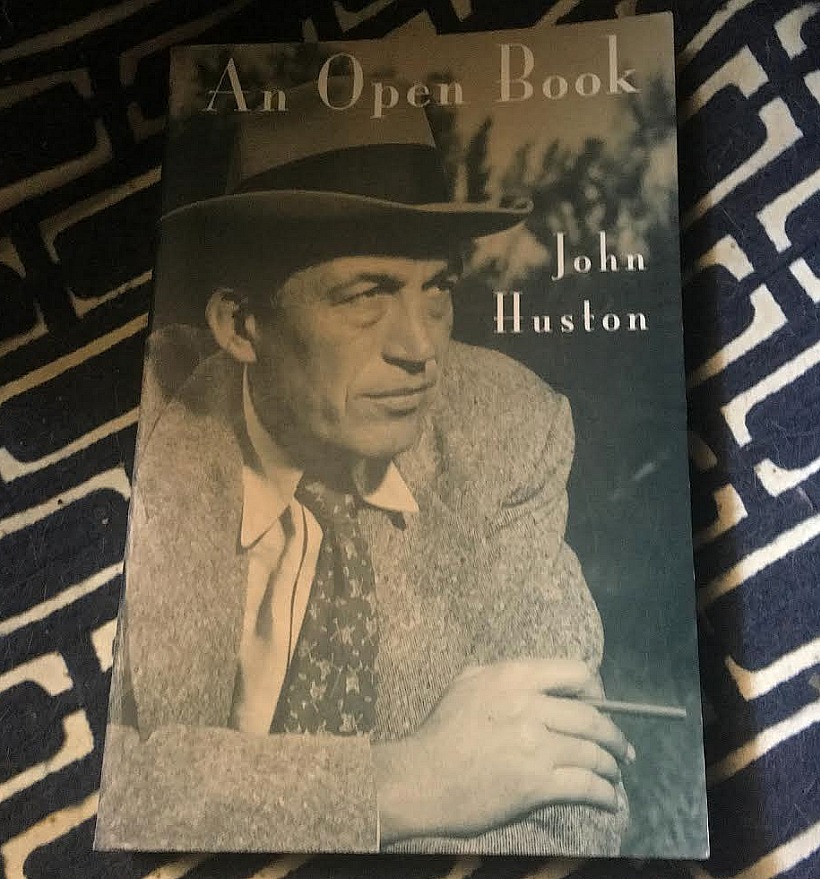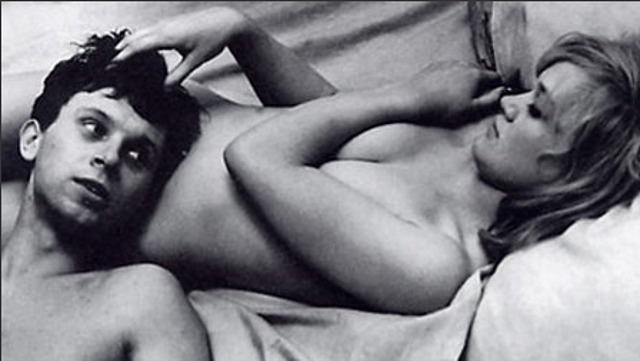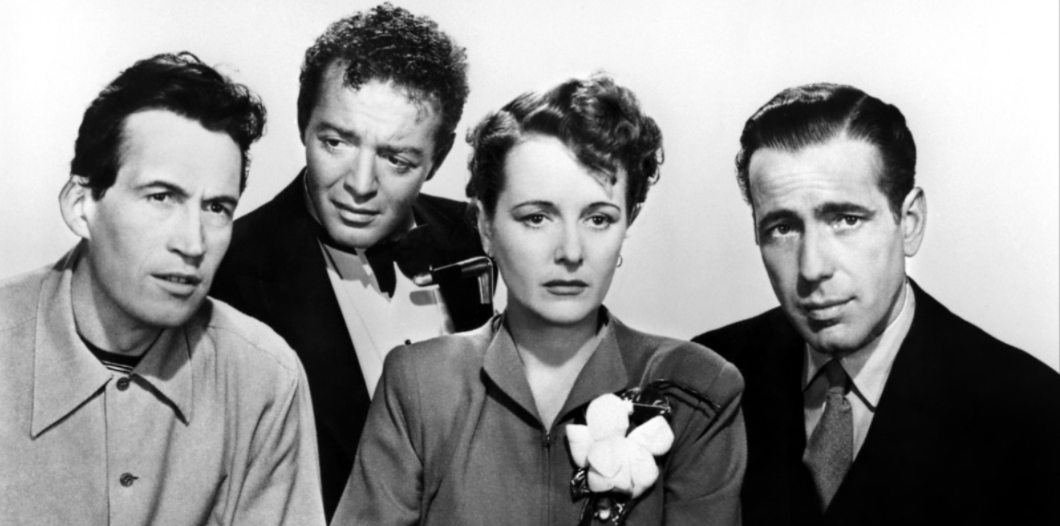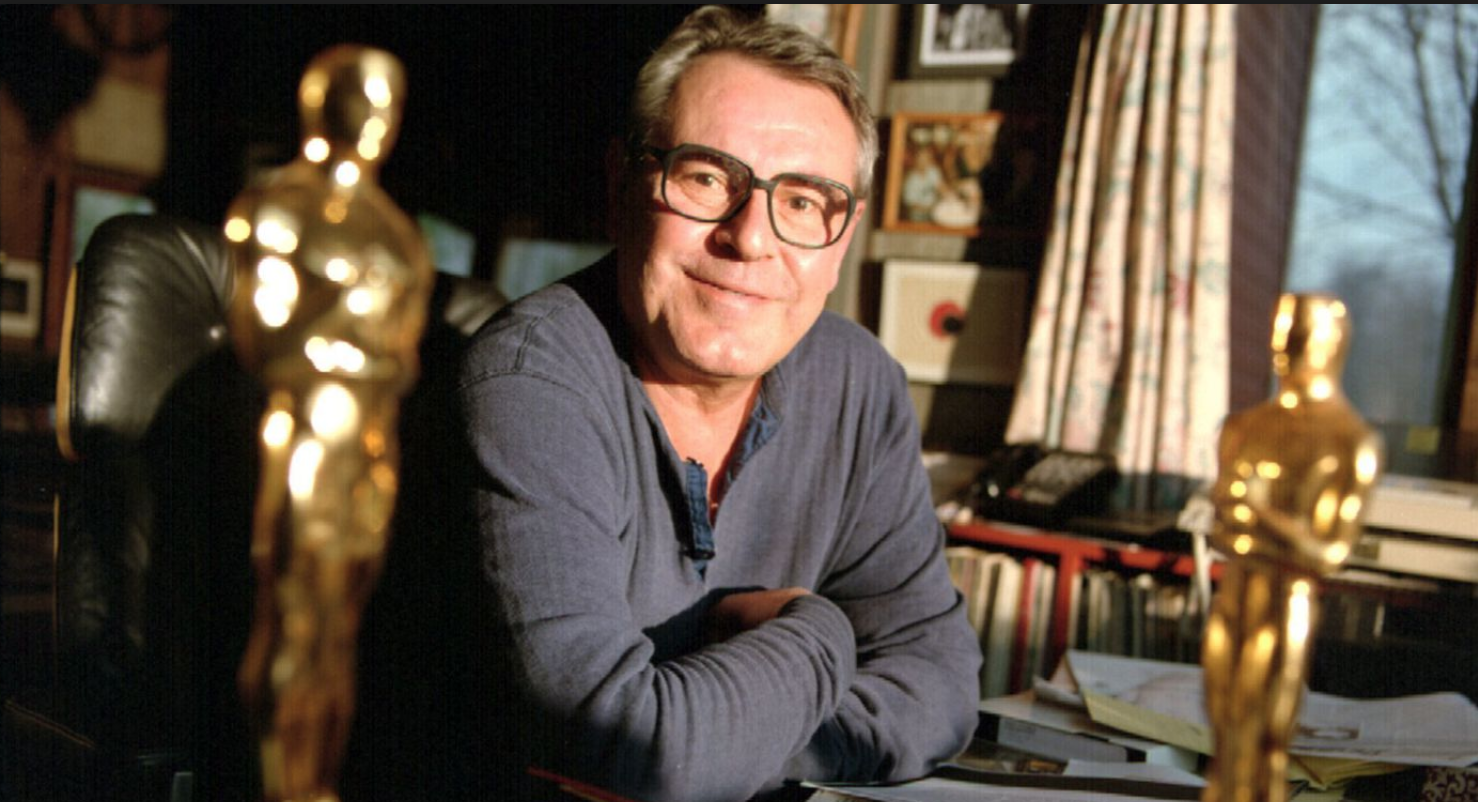Day: April 14, 2018
Before The Scourge
As much as I hate even thinking about Avengers: Infinity War (Disney, 4.27), much less the idea of retro-injecting the Marvel serum into the mid ’90s, these casting decisions are fairly spot-on. I’m figuring it was cast in early to mid ’94, began shooting in late ’94 and was given a wide release in the fall of ’95. Then again things were a lot different 23 or 24 years ago. The gamer and comic-book-reading generation hadn’t begun to take over Hollywood and the first stirrings of hunger for superhero fables weren’t really being felt until after 9.11.01, and more like ’03 or ’04.

John Huston Was Actually Young Once
All my life I’ve regarded John Huston (1906-1987) as quite the fellow, and now at long last I’m reading his autobiography, which was first published in 1980. A 1994 trade paperback version was just delivered by Amazon.
Huston was first and foremost a lion, and not incidentally a director of above-average and sometimes brilliant films for over 45 years in a row.
The ones he made during his first decade are unassailable — The Maltese Falcon, Across The Pacific, Let There Be Light, The Treasure of the Sierra Madre, Key Largo, The Asphalt Jungle, The Red Badge of Courage and The African Queen. Huston’s early to mid ’50s output was pretty formidable also — Moulin Rouge, Beat The Devil, Moby Dick and Heaven Knows, Mr. Allison.
For the next 30 years Huston’s films were in and out, but at least they included The Unforgiven, The Misfits, The Kremlin Letter, Fat City, The MacKintosh Man, The Man Who Would Be King, Under The Volcano, Prizzi’s Honor and The Dead.
From David Thomson‘s “New Biograhical Dictionary of Film”: “Huston was…the movie director who told manly, energetic stories, and [who] liked to end them on a wry chuckle. He was himself a writer, a painter, a boxer, a horseman, a wanderer, a gambler, an adventurer and a womanizer.
“More than most he relished the game of getting a movie set up and the gamble of out-daring and intimidating the studios. His best pictures reflect those tastes and that attitude and had an expansive, airy readiness for ironic endings, fatal bad luck, and the laughter that knows men are born to fail.”

Five Weeks Later
Last September Focus Features announced that Josie Rourke and Beau Willimon‘s Mary, Queen of Scots would open on 11.2.18 — a good award-season date that gives everyone (Academy, HFPA, BFCA, guilds, critic groups) plenty of time to see it and assess its value. Now the opening has been pushed back to 12.7.18. I don’t know what this means exactly. Maybe nothing. An award-season release between late October and late November is generally preferred over a December one, although there’s nothing “problematic” with an early December date.
Mary, Queen of Scots will presumably tell the basic story of Mary Stuart (Saoirse Ronan), who ruled over Scotland for 14 and 1/2 years (December 1542 through July 1567), experienced all kinds of marital and political intrigues during her reign and after, and who was imprisoned by Queen Elizabeth in 1568 and lost her head some 19 years later, in 1587, also at Elizabeth’s behest. Pic is based on John Guy’s 2004 biography “My Heart Is My Own: The Life of Mary Queen of Scots” (“[A] portrait of a shrewd and charismatic young ruler who relished power and, for a time, managed to hold together a fatally unstable country”).
Pic costars Margot Robbie (Queen Elizabeth), David Tennant, Jack Lowden, Martin Compston, Joe Alwyn, Brendan Coyle and Guy Pearce.

Saoirse Ronan in Josie Rourke‘s Mary, Queen of Scots (Focus Features, 12.8).
Only in Moronville
An Arkansas father-to-be wanted to announce the baby’s feminine gender in a flashy, yaw-haw, Dukes of Hazzard manner, and in a way that would impress his low-rent yokel friends. So he arranged for his Mustang engine to belch out pink smoke….it’s a girl! Welcome to the realm of the douchebag rube.
Respect for Milos Forman
The legendary Milos Forman has passed at age 86. An acclaimed Czech-born director, sometime actor (Heartburn) and all-around bon vivant, he lived a long and hungry life — not the fastest operator but always the striver.
Forman is best known for a high-flying decade (’75 to ’84) when he was Hollywood’s go-to guy for flavorful, distinctive adaptations of three distinguished plays — One Flew Over the Cuckoo’s Nest, Hair and Amadeus. And for his attempt to movie-ize Ragtime, the 1975 E.L. Doctorow novel.
But his grandest era was his Czech New Wave run in the mid to late ’60s, when he directed the acclaimed Loves of a Blonde (’65), a quirky, episodic thing with a native sense of humor, and The Fireman’s Ball (’67), which got Forman into a bit of trouble with the Communist Czech government for lampooning their bureaucratic mindset.
Forman continued to fly high during his American breakout period in the early ’70s, mainly due to the critical popularity of Taking Off (’71), an offbeat American family comedy that costarred Buck Henry and Lynn Carlin.
 From Forman’s Loves of a Blonde (’65).
From Forman’s Loves of a Blonde (’65).In the mid ’70s I played Dr. Spivey in a Stamford Community Theatre production of One Flew Over The Cuckoo’s Nest, and from this immersion I felt that I came to know Dale Wasserman‘s adaptation of Ken Kesey’s celebrated book pretty well. And I honestly felt that the play had a certain coiled-spring, caged-animal tension that Milos Forman’s 1975 film version lacked. Everyone loved it, of course, and I’m not putting it down, but I never got over my first impression — i.e, “it’s good but the play was better.”
Sometime in ’81 I saw Peter Shaffer‘s Amadeus at the Broadhurst, and revelled in Ian McKellen and Peter Firth‘s performance as Salieri and Mozart. It was such a huge, radiant high that I had difficulty adjusting to Forman’s film version, which opened in September ’84. It was a handsome, well-crafted thing and a Best Picture Oscar champ, of course, and like everyone else I was taken by F. Murray Abraham‘s Salieri. But Forman’s film just didn’t have that same snap and pizazz, and I hated Thomas Hulce‘s performance as Mozart and flat-out despised Elizabeth Berridge‘s bridge-and-tunnel performance as Constanze Mozart (i.e., “Wolfie”). A good film but the play was much better.
So what American-funded Forman film did I really like without reservation? Oddly, Hair (’79). This may have been because I never saw the original stage musical, but it also had something that felt straight and real and self-owned. Treat Williams, John Savage and Beverly D’Angelo costarred. Forman’s pic was well-reviewed but was seen as a financial failure, having cost too much ($11 million) for what it earned ($15 million and change).


